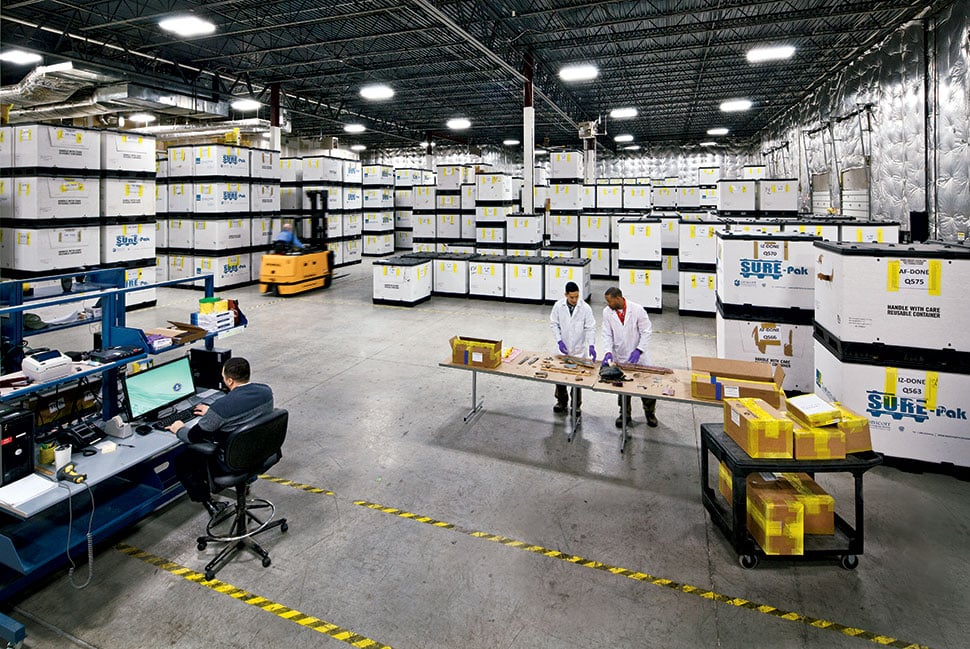
The official name for the FBI’s repository for improvised explosive devices directed at the nation’s armed forces is TEDAC—the Terrorist Explosive Device Analytical Center. But the people who work there call it simply “the bomb library,” and they consider it hallowed ground. The unmarked warehouse in an undisclosed Virginia location is stacked with white containers called triwalls, which hold bits of metal, wire, plastic, wood, nails, and rubber—blasted components of jury-rigged devices that have killed or maimed American soldiers and locals. Most of the IEDs come from Iraq and Afghanistan, although the FBI collects evidence from other incidents across the globe as well as domestically. Forensic scientists from the FBI laboratory in Quantico examine the remnants for terrorist “signatures,” fingerprints, DNA, and other clues to how a bomb was made. Most of the devices are simple and cheap, say evidence technicians Johnny Mai and Mark Roberson (above), who delicately sorted through a new cache from Afghanistan on a recent morning. Since opening in 2009 with a few hundred triwalls, the facility now contains more than 1,300, holding about 100,000 IEDs. More arrive by truck at least monthly, and with the resurgent violence in the Middle East, one FBI specialist says, “the truck has been more full.”
This article appears in the April 2014 issue of Washingtonian.





